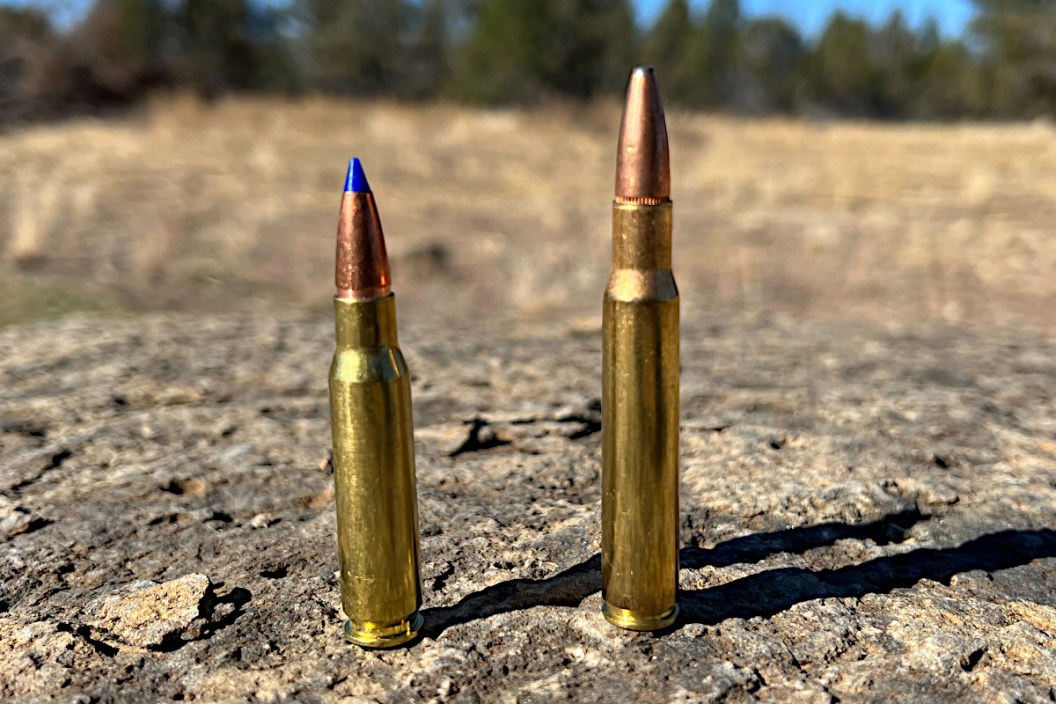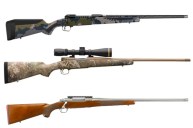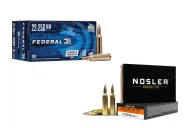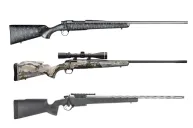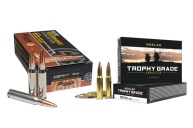It's safe to say the .308 Winchester and .30-06 Springfield rifle are two American legends at this point. Both have a storied service history with the U.S. Army and other military branches. Today, both still see some action on the battlefield in conflicts around the world. However, they're probably better known for being two of the most popular hunting rifle cartridges on the market today. Nearly every firearm manufacturer from Remington, Ruger, and Savage to Nosler, Winchester, and more has more than one offering in .308 and .30-06.
Because of the bevy of offerings, factory ammo availability, and the fact that the bullets used are basically identical, these two hunting cartridges inevitably get compared to one another even though one is long action and the other is short. Debates rage through hunting camps every year over the benefits of one over another. Which raises a very real question over which of these two chamberings is the better round. Let's break it all down to see the real differences between these two chamberings to try to find out.
.30-06 Springfield Specs and Details
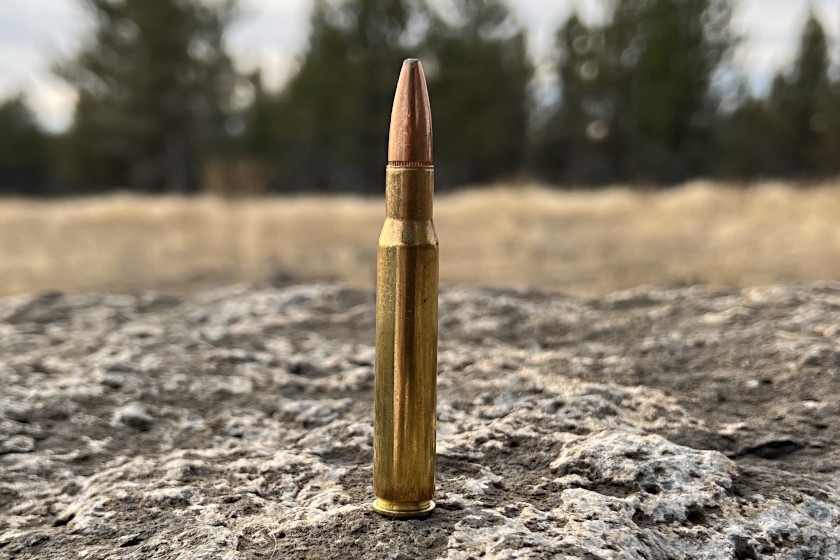
A handloaded .30-06 Springfield cartridge. Photo by Sereena Thompson/Wide Open Spaces
Pros:
- Best muzzle velocity and energy
- Better velocity and trajectory at long range
- Best for elk and larger big game
- Cycles well from bolt-actions
Cons:
- Heavier recoil
- Heavier rifles
- Not as efficient for handloading
- Slower reloading
In the early 20th century, the .30-06 etched a permanent place in U.S. military history. In 1906, engineers with Springfield Armory modified the neck of a .30-03 Springfield to create the round. The new cartridge was developed just in time for World War I. The new, long-action cartridge was chambered for a modified version of the M1906. But most people better remember the .30-06 for being used in the legendary semi-automatic M1 Garand during World War II. The military legacy has been further cemented by the marksmen who have used it as a sniper round on battlefields from Korea to Vietnam. In any case, many soldiers returned home from war and realized the .30-06 would be as effective on big game animals as it was on the battlefield, which only further established its popularity.
The .30-06 has a bullet diameter of .308 inches and a case length of 2.494 inches. The overall length is around 3.34 inches. The case capacity is 68-70 grains. It is a bottleneck round with a .441-inch shoulder. Bullet weights for factory ammo vary between 125 to 220 grains. Most hunters tend to stay in that 150-178 grain range, though. The 220-grain bullets are more of a specialty thing for overseas big game hunting trips.
The ballistics of .30-06 factory ammo are nothing to sneeze at. Take the 165-grain Hornady SST (Super Shock Tip) Superformance as our first example. These rounds are doing 2,960-fps at the muzzle through a 24-inch barrel and are hitting with 3,209 foot-pounds of energy. Take things out to 100 yards, and you're still getting 2,750 fps and 2,769 foot-pounds of energy. At 200 yards, you're looking at 2,380 pounds of energy and 2,549 fps. The .30-06 is known as a long-range round, and it shows with the fact that Hornady puts the velocity at 1,997 fps at 500 yards and it's still hitting with 1,461 foot-pounds of energy.
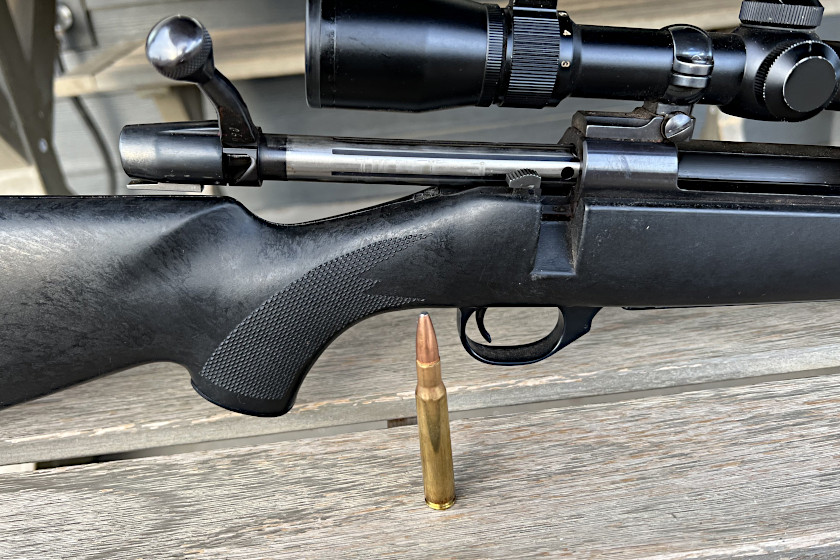
Handloaded .30-06 cartridge and a bolt-action hunting rifle. Photo by Sereena Thompson/Wide Open Spaces
Dropping down to a factory Hornady 150-grain Superformance SST, you're looking at 3,080 fps at the muzzle from a 24-inch barrel. The muzzle energy is 3,159 foot-pounds. Take it out to 100 yards, and you're looking at 2,848 fps and 2,700 foot-pounds of energy. Hornady has the velocity of 2,627 fps at 200 yards with 2,298 foot-pounds of energy. When you stretch things out to 500 yards, these rounds are still doing 2,025 fps and are hitting with 1,366 foot-pounds of energy. Pushing things up to a 178-grain, Hornady ELD-X Precision Hunter round, the muzzle velocity is 2,750 fps and the energy is 2,989 foot-pounds. Stretched out to 200 yards, they're still doing 2,420 fps and hitting with 2,315 foot-pounds of energy from a 24-inch barrel. Even at 500 yards, 1,969 fps and 1,533 foot-pounds of energy are not bad at all.
Speaking of range, the .30-06 is a rather flat shooting round. Which makes this a popular long-range hunting round. Hornady puts the drop at zero for all these factory rounds at 200 yards. For most factory rounds, you don't start to see significant drop until around the 300-yard mark. Those 178-grain ELD-Xs we mentioned earlier have a drop of -7.7 inches at 300, -22.2 at 400, and -44.3 at 500. The 165-grain SSTs are a little better at -6.9 at 300, -20.1 at 400, and -40.7 at 500. Lighter bullets obviously have a better trajectory, but then you need to start considering things such as energy loss. Those 150-grain SSTs have a drop of -6.4 at 300, -18.9 at 400, and -38.4 at 500 yards. At 500 yards, only the 178-grain ELD-X maintains over 1,500 foot-pounds of energy. It matters because state wildlife agencies such as Colorado Parks and Wildlife states 1,500 pounds of energy as what they'd recommend as a minimum to kill an elk. We know people have killed elk using smaller calibers with less energy, but we're speaking as a good rule of thumb here if you want to stay ethical. For whitetails, a good rule of thumb is 1,000 foot-pounds of energy at a minimum, so this round is going to be more effective for deer than elk once you get out to 500 yards or more.
When the .30-06 was first introduced, many of the old service rifles were touted as having an effective range of 1,000 yards or more. It's possible to hit targets at those ranges, but most average hunters simply aren't going to have the skills or the sophisticated scopes and equipment for shots of 500 yards or more. Which is why the effective range is probably best inside that 200-300 window where the drop and energy loss are most minimal anyway.
.308 Winchester Specs and Details
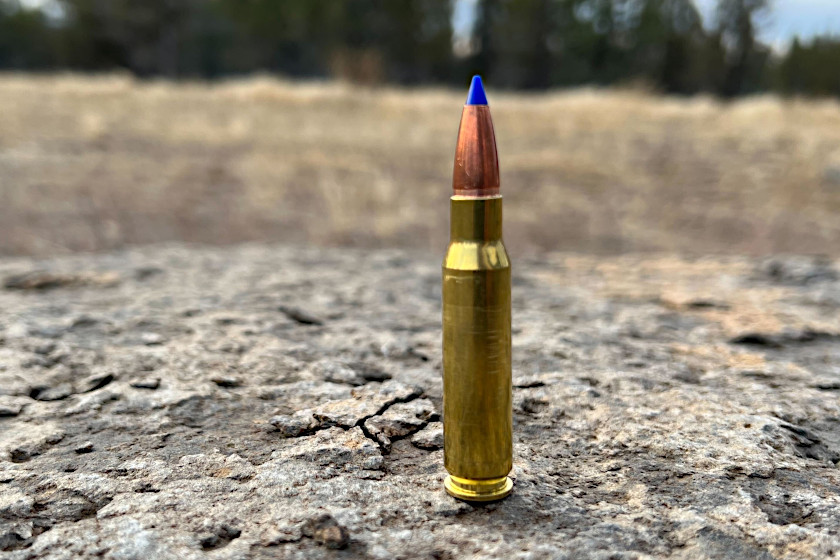
A handloaded .308 Winchester cartridge. Photo by Sereena Thompson/Wide Open Spaces
Pros:
- Less felt recoil
- Faster reloading and cycling
- More efficient for handloading
- More factory ammo options
Cons:
- Less energy and velocity
- More drop than .30-06
- Slightly less effective at longer range
- Might not be as efficient on elk or other larger big game
Of course, the military is on a never-ending quest for improvement. Top Army brass loved the .30-06's bullets, but they hated the long action and longer case lengths. The reason was simple: They wanted troops to carry more rounds into battle. This led to the development of the 7.62x51mm NATO, which is still standard for many of today's militaries, including the United States. Winchester saw the potential in the 7.62x51 and then developed what is essentially the civilian version of that round. It was good thinking on their part because the round arguably became the most popular short-action cartridge on the planet.
Built from a .300 Savage parent case, the .308 Winchester also has a .308-inch bullet diameter. The neck diameter is 0.3433 inches, the case length is 2.015 inches, and it has an overall length of 2.800 inches. The case capacity is reduced from the .30-06, coming in at around 56 grains. Bullet weights vary from 125 grains up to 180 grains. Hornady does make a factory 220-grain Interlock Custom International, but most hunters tend to stick to the 150-178 grain range.
Looking at ballistics, many .308 factory rounds routinely hit 3,000 fps at the muzzle. That's the velocity of the Hornady 150-grain SST Superformance. The muzzle energy is 2,997 foot-pounds. Stretch it out to 100 yards, and it's doing 2,772 fps and 2,558 foot-pounds of energy. At 200 yards, the velocity is 2,555 fps and 2,173 foot-pounds of energy. Stretch it to 500 yards, and the SSTs are doing 1,963 fps, and are delivering 1,282 foot-pounds of energy. Stepping things up a bit to the 165-grain version of the same factory round, the muzzle velocity is 2,840 fps and the energy is 2,955 foot-pounds. At 100 yards, it's at 2,635 fps and 2,544 foot-pounds, respectively. The 200-yard velocity is 2,439 fps and 2,180 foot-pounds of energy. At 500 yards, these rounds are doing 1,902 fps and delivering 1,325 foot-pounds of energy.
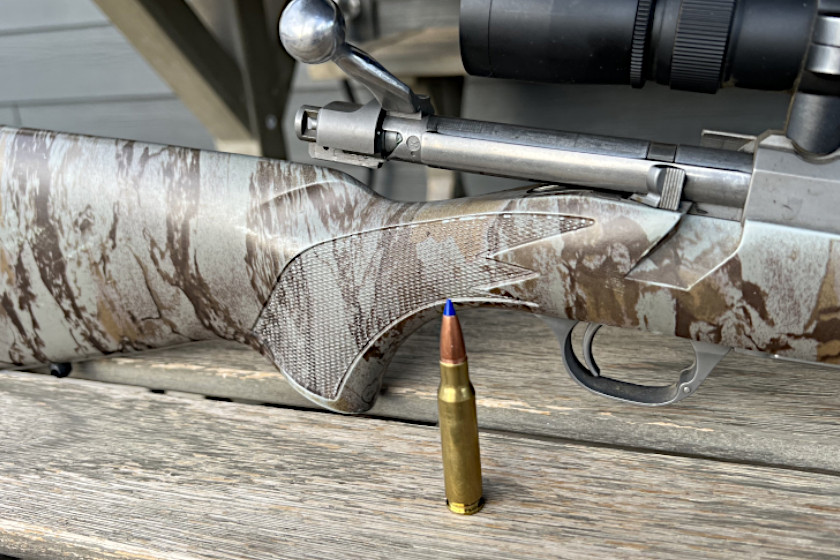
A handloaded .308 Winchester rifle cartridge and rifle. Photo by Sereena Thompson/Wide Open Spaces
Finally, looking at the 178-grain ELD-X, the muzzle velocity is 2,600 fps, and the muzzle energy is 2,672 foot-pounds. At 100 yards, the numbers are 2,437 fps and 2,348 foot-pounds of energy. At 200 yards, they're doing 2,281 fps and hitting with 2,056 foot-pounds of energy. When you take the ELD-X out to 500 yards, you're looking at 1,846 fps speeds, and 1,346 foot-pounds of energy from a 24-inch barrel.
When you start looking at trajectory, the .308 is very close to the .30-06. Once again, Hornady gives all those rounds mentioned above a 200-yard zero. It's once you start getting to 300 and beyond that, you start to see some significant drop. For the 150-grain SSTs, they're dropping -6.9 at 300, -20 at 400, and -40.7 at 500 yards. The 165-grain option drops -7.6 at 300 yards, -22.1 at 400, and -44.6 at 500 according to their ballistics data.
Finally, the 178-grain ELD-X drops -8.8 at 300, -25.5 at 400, and -50.2 at 500 yards. As you can see, the .308 isn't quite as flat as the .30-06. We know that many trained military personnel have shown the .308 can be quite effective at ranges beyond 500 yards. However, just like with the .30-06, the .308 Winchester is going to most effective for most hunters in that 200-to-300-yard range at the most. While it can kill big game at distances beyond that, the loss of energy becomes a big concern, especially for larger animals such as elk once you get out to 500 and farther. Plus, it just takes a higher degree of skill, hundreds of hours, and thousands of rounds at the range to become extremely proficient at ranges beyond that 500-yard mark.
Reloading .30-06 and .308 Winchester
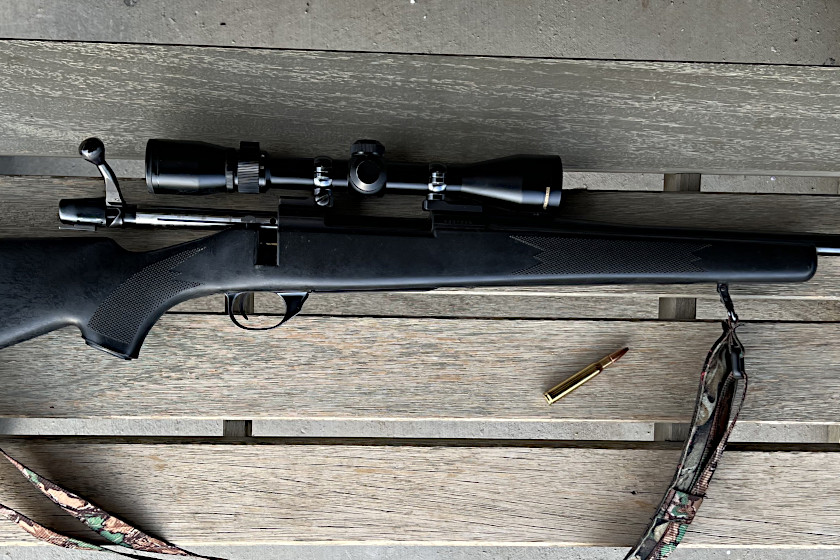
A bolt-action hunting rifle and a handloaded .30-06 cartridge. Photo by Sereena Thompson/Wide Open Spaces
There is a lot of quality factory ammunition out there. However, these two cartridges have become incredibly popular with dedicated reloaders because you can sometimes squeeze a bit more speed and energy out of a quality handload. Wide Open Spaces social media manager Sereena Thompson, a hunter with over 15 years of experience in the field, is one of them. She regularly reloads and uses both cartridges hunting in the wilds of Washington state with her husband, and she was able to share some great insight into both cartridges, but especially the reloading aspects.
Thompson noted both calibers benefit from having a huge selection of bullets available and are very standard when it comes to reloading. Although she also noted that while they were effective up to 180 grain bullets, she would probably look for a different caliber for anything heavier than that. Thompson has found a .30-06 loaded with 62 grains of RL22 smokeless powder produces a muzzle velocity of approximately 3,002 fps, while a .308 loaded with 52.5 grains of Big Game Powder Max produces a velocity of 2,904 fps. So, the .30-06 maintains a roughly 100 fps speed advantage. However, Thompson picks the .308 as the clear winner from an efficiency standpoint.
"When hand reloading, you can get roughly 133 rounds out of one pound of powder with a .308 compared to 111 rounds on the .30-0," she said.
That's only a slight edge of around 20 rounds. However, when you consider that factory ammunition for either caliber goes for anywhere from $33 to $60 a box, there's some savings to be had on the .308 side if you do a lot of shooting. That's especially true now with inflation and the cost of everything going up.
.30-06 Springfield vs .308 Winchester
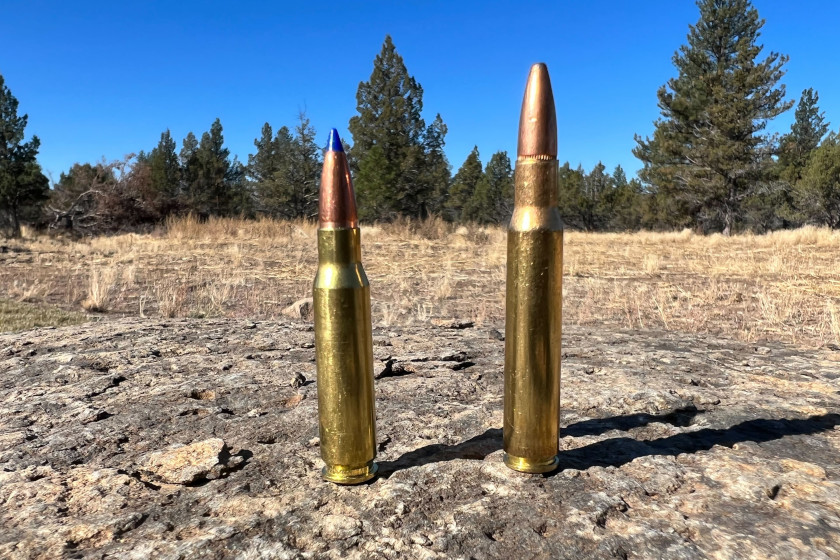
A side-by-side comparison of the .308 (left) to the .30-06 (right). Sereena Thompson/Wide Open Spaces
After a deep look at the ballistic data, both on the factory and reloading side, it should be obvious the two rounds are nearly identical. The bullets are the same, and so are the primers. The only real difference is the case capacity and length. The .30-06 is slightly larger. In fact, it's almost not fair to compare them ballistically. You get a 100 feet-per-second speed advantage, and a slight trajectory and energy advantage, to the .30-06 over the .308. However, we can promise you the game animals aren't going to know the difference between a 178-grain .30-06 caliber bullet doing 2,750 fps at 100 yards and a 178-grain .308 caliber bullet doing 2,600 fps at the same distance. If you're hitting that deer or elk in the vitals, it's going down either way.
However, Thompson reminded me again that rifle caliber selection isn't always as simple as muzzle velocity and energy. One of the main reasons the Army moved away from the .30-06 in the first place was because it cycled better in a bolt-action rifle than a semi-automatic. The shorter case length of the .308 does significantly better in that regard. The .308 is also faster to reload in the field; and because it's a short, the action is often slightly stiffer. Depending on the model of rifle, this can help with the accuracy.
The big reason many hunters have moved away from the .30-06 in favor of the .308 is rather simple: less recoil. The kick is much more tolerable with the .308 than the .30-06, which makes the .308 a great choice for younger hunters or those who simply don't want to deal with the extra kick anymore. We'll admit that on paper, the discrepancy in recoil doesn't look like much. The .308 produces approximately 21.6 foot-pounds of felt recoil compared with the .30-06's 25.4 foot-pounds. However, it's one of those things that's rather noticeable when you've just squeezed the trigger. It's one of the major selling points of the round for Thompson as her favorite.
"Overall, and most likely going against the grain, the .308 would be my pick," she told me. "Even though the .30-06 has a very slight ballistic advantage, the .308 offsets that with less felt recoil, a shorter action, and is more efficient when reloading, making this a great rifle for all age groups and experience levels."
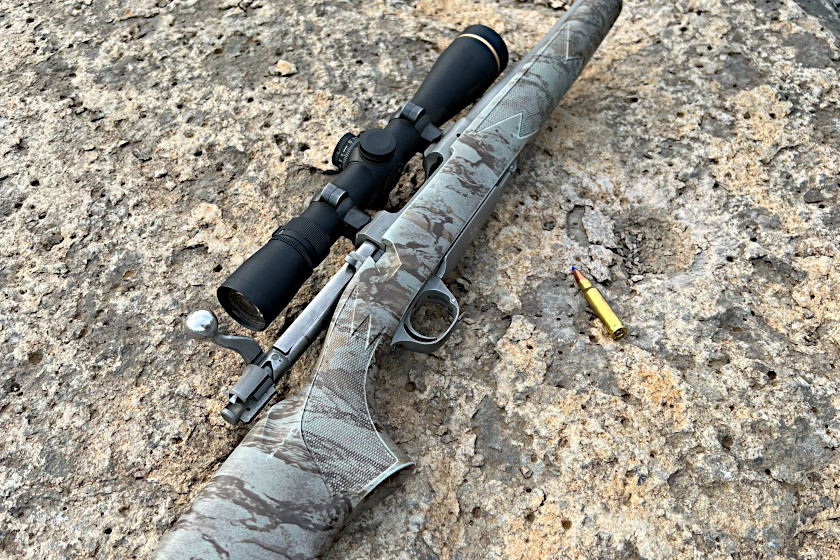
The .308 and a bolt-action rifle. Photo by Sereena Thompson/Wide Open Spaces
It's hard for us to argue with that line of thought. We're going to agree with Sereena: The .308 is our favorite, although it was an extremely close race. We also want to state that in many ways, the opinions on these highly accurate cartridges are quite subjective. We pick the .308 Win because it is a great choice for shooters concerned with ergonomics and who are going to keep their shots on deer or elk in that 200-to-300-yard window. That's likely going to be most of us. It would be our pick for most deer hunting scenarios as it does a real number on whitetails and mule deer without beating up your shoulder. It also makes it more pleasant on the target shooting range when you just want to have some fun throwing lead downrange. We also just like the slightly reduced weight of short action rifles to the long action .30-06.
On the flip side of the coin, we can't deny that the .30-06 has a higher velocity and is the better option for big game hunting involving larger or more-dangerous animals such as black bears. It's also probably the better option for those who like to use heavier bullets. The .30-06 is unquestionably the better option for long-range shooting, especially for those who want to reach out to 400 yards or more on large-game animals. And that's because it's going to deliver better velocity and energy for cleaner kills at those distances.
At the end of the day, it's hard to go wrong with either one of these classic rounds. They both have plenty of stopping power and range for most big game that roams North America. For the prospective buyer, it's not a bad idea to go out and shoot both at the range before deciding which one you're going to sink your hard-earned money into.
For more outdoor content from Travis Smola, be sure to follow him on Twitter and Instagram. For original videos, check out his Geocaching and Outdoors with Travis YouTube channels.
